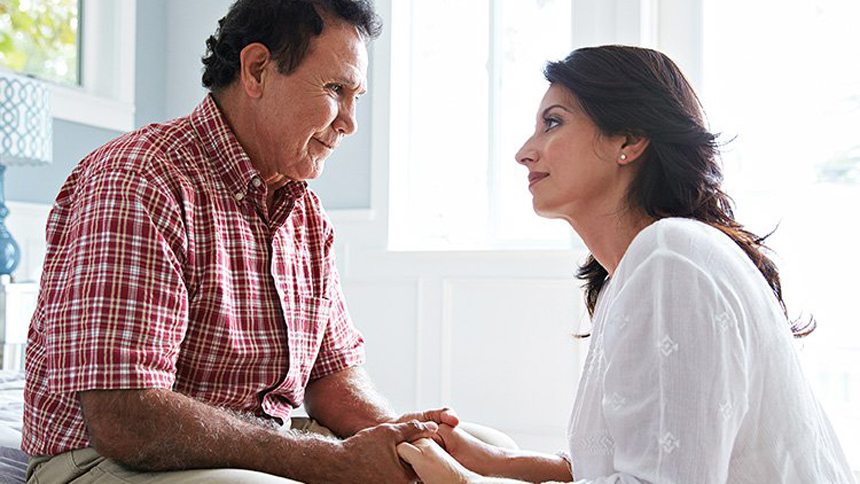
As people living with HIV continue to live longer and healthier lives, a new conundrum is beginning to emerge within the community: managing the virus alongside comorbidities that come with age, like osteoporosis, heart disease, vision problems, and diabetes (the latter effects one in every 10 HIV-positive people). In 2013, nearly 42 percent of HIV-positive people in America were 50 and older.
These issues are compounded for poz people who trace their heritage to Latin America (which includes Portuguese speakers from Brazil), Mexico, Cuba, the Caribbean, or other Spanish-speaking countries. Yet, there have been few studies focusing primarily on their specific needs. As a result, healthcare professionals are often clueless, which in turn makes this community less likely to discuss sexual practices with their doctors and less aware of HIV risks overall.
Olvidados (or “Forgotten Ones”), a new report by the Latino Commission on AIDS (in partnership with the Hispanic Health Network) seeks to explain the social and health challenges faced by Latino and Hispanic people 50 and older who are living with HIV in the U.S. Over the course of a year, researchers collaborated with community-based organizations and clinics in various American cities, eventually speaking with 157 HIV-positive respondents — 61 percent of whom identified as male, 36 percent as female, and three percent as transgender.
Representing 18 percent of the U.S. population, Hispanics and Latinos are the nation’s fastest-growing minority and ethnic groups, as well as the fastest growing aging population. They also account for 24 percent of HIV diagnoses, the study points out. As a matter of fact, in 2015, Latinos aged 50 to 54 had an HIV transmission rate more than twice that of white non-Hispanics, reports the Centers for Disease Control and Prevention.
Lead researchers of the new report, David Garcia and Gabriela Betancourt confirmed that, while most respondents reported being insured and having undetectable viral loads, about 25 percent of all respondents said they were “less than satisfied” with some aspect of their provider’s care. According to Garcia, that might be due to a lack of respect from doctors themselves.
“Developing a genuine relationship with their provider was important for continued engagement in their care,” Garcia explains to Plus. “This included liking one’s provider, having a provider that takes time to talk or is available, and a provider that is respectful of their needs and culture. [Respondents] also noted that providers who take a ‘team approach’ to care were helpful. Providers are often rushed and do not give their patients the attention they need.”
A lack of trust might also explain the near 60 percent of respondents who were not counseled during medical visits about relevant health concerns, screenings, and comorbidity risks. This could also explain why one in three participants indicated some level of difficulty adhering to proper treatment.
Another unfortunate discovery was that over half of respondents had clinical depression and daily stress, which in turn compromises the immune system. According to focus groups lead by researchers, common struggles included fear and mistrust, a lack of understanding of how HIV could impact other illnesses, and the social challenges relating to access to care — not to mention, language barriers. As these issues continue to pile on, more and more older HIV-positive Latinos are choosing to live a life of isolation. And they’re not alone.
Nearly one-third of older adults living outside of nursing homes or hospitals live alone, according to the Institute of Aging. Another study published in CMAJ Open, an online open-access medical journal from Canada, showed that over the course of a decade, more than eight percent of poz deaths were caused by suicide.
Garcia adds that language barriers, poverty, and low education levels are associated with inadequate knowledge about HIV and lower HIV testing rates, “therefore, we need to better learn how these factors vary among those who are foreign-born and those who are more acculturated versus those who are U.S. born.” Garcia’s study also points out the significance of cultural values within Latino communities, known as “simpatia, respeto, familismo,” referring to sympathy, respect, and family. Because of these traditional value systems, many older HIV-positive Latinos avoid coming out poz for fear of causing pain or distress to loved ones. But being in the closet ultimately leads people to feel isolated and ashamed.
The study further shows that older Latinos have significantly lower levels of education than the general population, with 38 percent having less than a high school education compared to 17 percent of African-Americans and 7 percent of non-whites. It should also be noted that 18 percent of older Latinos also live below the poverty line, with 70 percent receiving lower social security payments. Affordable housing is another challenge, and it has an even bigger impact on those with chronic health problems.
“All of these issues need to be taken into consideration to meet the needs of our diverse Latino communities,” Garcia says. “The more we learn about [stigma], the better we can tailor our services so that it can bring wider access to care. Larger social messaging campaigns are needed to address cultural issues that perpetuate stigma in Hispanic/Latino communities to impact their use of HIV testing and prevention services, including biomedical interventions. Anti-stigma campaigns must effectively address discrimination and violence due to homophobia, transphobia, and misogyny, as well as race and ethnicity, to be successful.”
Garcia explains that while religion might also play a role in HIV and LGBT stigma among Latino communities, stigma is a “learned behavior.” He cites the Latino Commission on AIDS as a great example for anti-stigma initiatives.
“The Commission runs one of the oldest Latino religious leadership projects, where we train and enlist leaders from religious congregations to deliver health education messages, including anti-stigma education to each participating congregation in order to reach Latinos in New York City in a meaningful way that resonates with these underserved communities,” he says. “Replicating this type of program at a national level would greatly impact our Latino community and work to demystify and combat stigma.”
It is time to address the invisible voices in the community. The needs of Latinos and Hispanics must not be ignored while we discuss growing concerns around HIV and aging — and the only way to do that is by educating ourselves, and our healthcare providers, on the social, political, and economic conditions these groups face.
When it comes to treating aging HIV-positive Latinos, Garcia says healthcare providers “need to establish a genuine relationship with enhanced rapport-building strategies that work to allow that patient to trust them and open up about their concerns.”
Source: This article was written by David Artavia for hivplusmag.com


